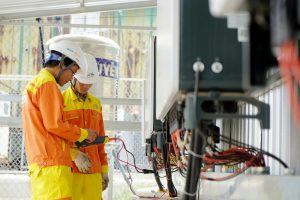Beyond the traditional: the rise of low-emissions and sustainable vehicles
In recent years, there has been a growing concern about the impact of traditional vehicles on the environment. With rising pollution levels and the threat of climate change looming, the need for low-emissions and sustainable vehicles has become more urgent than ever before. While traditional gas-powered vehicles have been the norm for many decades, there has been a significant rise in the production and use of alternative and eco-friendly vehicles in the past few years. In this article, we will explore the rise of these low-emissions and sustainable vehicles, and how they are transforming the automotive industry.
The Need for Low-Emissions and Sustainable Vehicles
The transportation sector is one of the biggest contributors to greenhouse gas emissions. According to the Environmental Protection Agency (EPA), transportation accounted for 28% of total greenhouse gas emissions in the US in 2018. This is primarily due to the use of fossil fuels in traditional gas-powered vehicles, which release carbon monoxide, nitrogen oxides, and other harmful pollutants into the atmosphere. These emissions not only contribute to climate change but also have a significant impact on human health, leading to respiratory problems and other health issues.
With the increasing focus on sustainability and reducing carbon footprint, there has been a growing need for low-emissions and sustainable vehicles. These vehicles use alternative sources of energy, such as electricity or hydrogen, to power their engines, resulting in significantly lower emissions. As a result, they offer a more environmentally-friendly option for transportation, making them a popular choice among consumers.
The Rise of Electric Vehicles
Electric vehicles (EVs) have been at the forefront of the low-emissions and sustainable vehicle movement. These vehicles use electricity stored in batteries to power their engines, eliminating the need for fossil fuels. The popularity of EVs has grown exponentially in the past few years, with major automotive companies investing heavily in their production. In addition to reducing emissions, EVs also have lower operating costs, making them an attractive option for consumers.
The Advancements in Battery Technology
One of the major challenges in the widespread adoption of EVs has been the limitations of battery technology. However, with advancements in technology, batteries are becoming more efficient and affordable. Tesla, a pioneer in the EV market, has been able to increase the range of its EVs with its new long-range batteries, making them a more viable option for long-distance travel. With further advancements expected in the near future, battery-powered vehicles are set to become even more mainstream.
The Role of Government Policies
Government policies and regulations have played a significant role in the rise of low-emissions and sustainable vehicles. Many countries have introduced incentives and subsidies to promote the adoption of eco-friendly vehicles. In the US, for example, there is a federal tax credit of up to $7,500 for EV buyers. This has resulted in a significant increase in the sales of EVs in the country. Additionally, several countries have also set targets for phasing out gas-powered vehicles, further encouraging the production and adoption of alternative vehicles.
The Emergence of Hydrogen-Powered Vehicles
While EVs have gained popularity, there has also been a rise in the production of hydrogen-powered vehicles. These vehicles use hydrogen gas to power their engines, with water being the only emission. This makes them a zero-emissions vehicle, with the potential to reduce greenhouse gas emissions significantly. The main challenge for these vehicles is the lack of infrastructure for refueling, but with investments being made in this area, they are expected to become a more viable option in the near future.
The Future of Low-Emissions and Sustainable Vehicles
The rise of low-emissions and sustainable vehicles has just begun, and the future looks promising. With advancements in technology and government support, these vehicles are expected to become more affordable and accessible for the general public. Several major automakers have announced plans to electrify their entire fleet in the upcoming years, further driving the adoption of alternative vehicles. This, coupled with the growing awareness and concern for the environment, indicates a bright future for these eco-friendly vehicles.
In conclusion, as the world becomes increasingly aware of the pressing need to reduce emissions and move towards a more sustainable future, the rise of low-emissions and sustainable vehicles is only going to gain momentum. With governments, automakers, and consumers all working towards this common goal, we can hope to see a significant shift in the transportation industry towards a more eco-friendly approach. The days of traditional gas-powered vehicles may soon be behind us, as we usher in a new era of low-emissions and sustainable vehicles.










